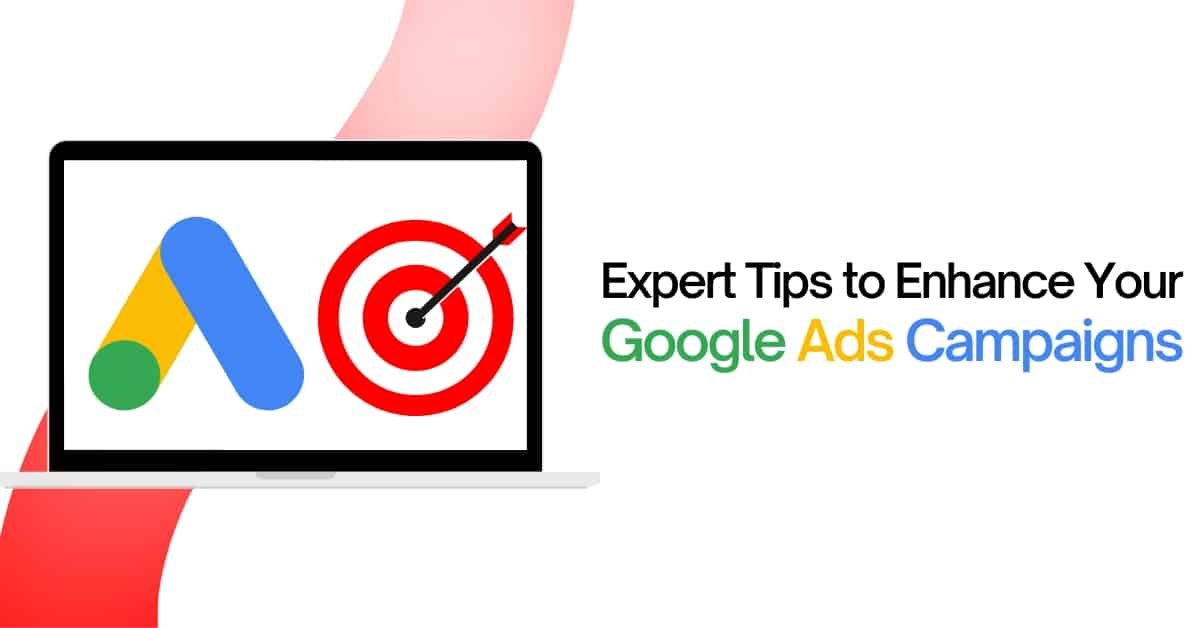Optimizing Google Ads campaigns is essential for businesses looking to maximize return on investment (ROI) and improve ad performance. Without a structured approach, advertising budgets can be wasted on ineffective targeting, low engagement, and poor conversions. Implementing well-defined strategies ensures that every advertising campaign is optimized for visibility, relevance, and cost efficiency.
From refining keyword selection to enhancing audience targeting, businesses must adopt a data-driven approach to improve their Google Ads performance. A well-optimized Google advertisement delivers higher conversion rates while keeping cost-per-click (CPC) and ad spend under control. Understanding key Google Ads best practices helps businesses create a structured pay-per-click (PPC) strategy that aligns with their online advertising goals.
Google Ads campaigns are a key type of online advertising strategy that includes multiple ad formats to enhance brand awareness. Display ads, search engine marketing (SEM), social media advertising, and video ads all contribute to expanding a business’s reach. By integrating these types of online advertising within a well-optimized Google Ads strategy, businesses can strengthen their digital presence, attract high-intent users, and improve engagement across platforms.
In this blog, we will explore top strategies for optimizing Google Ads campaigns, ensuring businesses achieve better ad placements, improved click-through rates (CTR), and higher conversions.
Top Strategies for Optimizing Your Google Ads Campaigns
Optimizing Google Ads campaigns requires a structured approach to enhance ad performance, reduce unnecessary spending, and increase conversions. Businesses must focus on refining targeting, improving ad relevance, and leveraging automation to maximize results. By implementing proven PPC strategies, businesses can improve their Google Ads performance while maintaining a cost-effective advertising campaign.
Below are some of the most effective strategies businesses can use to optimize their Google Ads campaigns.
1. Keyword Optimization for Higher Ad Relevance
Selecting the right keywords is a critical factor in Google Ads optimization. Businesses must focus on keyword relevance to ensure their Google advertisement reaches the right audience. By refining keyword targeting, businesses can improve ad rankings, reduce wasted spend, and drive high-intent traffic.
- Use Long-Tail Keywords for Precision Targeting
Long-tail keywords help businesses attract users with specific search intent, leading to higher conversion rates. Unlike broad keywords, long-tail keywords reduce competition and improve ad relevance. Businesses should regularly research and integrate high-performing long-tail keywords to enhance their pay-per-click strategy. - Implement Negative Keywords to Eliminate Irrelevant Traffic
Negative keywords prevent ads from appearing in unrelated searches, reducing wasted ad spend. By identifying and adding negative keywords, businesses can improve the efficiency of their PPC campaigns. For example, an online store selling premium watches can exclude terms like “free watches” to avoid non-converting traffic.
2. Crafting High-Converting Ad Copy and Creatives
The success of a Google advertisement depends on how compelling and relevant the ad copy is to potential customers. Well-crafted ad copy improves click-through rates (CTR) and ensures the online ad aligns with user intent. Businesses must focus on writing engaging, action-driven ad copy that captures attention and encourages conversions.
- Write Compelling Headlines and Descriptions
Strong headlines and persuasive descriptions directly impact ad engagement. Businesses should highlight key selling points, such as discounts, unique features, or limited-time offers. Clear, benefit-driven language makes the ad more appealing to users, increasing the likelihood of clicks. - Use A/B Testing to Identify High-Performing Ads
Running multiple ad variations helps businesses determine which versions generate the best results. A/B testing different headlines, descriptions, and calls-to-action (CTAs) allows businesses to refine their Google Ads strategy based on data-driven insights. Testing different creatives ensures that businesses maximize engagement and conversions.
3. Smart Audience Targeting and Segmentation
Effective audience targeting ensures that Google Ads campaigns reach the right users, improving engagement and conversions. Businesses must refine audience segmentation to maximize the impact of their advertising campaigns. By leveraging audience insights, businesses can optimize ad delivery and reduce wasted ad spend.
- Utilize Custom Audiences and Remarketing
Custom audiences allow businesses to target users based on their previous interactions with a brand. By using remarketing lists, businesses can re-engage visitors who have shown interest but did not convert. This strategy increases the chances of turning potential customers into paying customers, improving overall PPC performance. - Optimize Demographic and Geographic Targeting
Refining demographic and geographic settings ensures ads are shown to the most relevant audience. Businesses should analyze user data to adjust targeting based on age, gender, location, and device preferences. For example, a local restaurant can focus ads on users within a specific radius to attract nearby customers.
4. Optimizing Bidding and Budget Management
Proper bid management is crucial for controlling costs and maximizing returns in Google Ads campaigns. Businesses must continuously adjust their bidding strategies to align with campaign goals, audience behavior, and market trends. A structured approach to bid optimization helps businesses achieve better ad placements while maintaining cost efficiency.
- Adjust Bids Based on Device, Time, and Location Performance
Businesses should analyze performance data to determine when and where their ads perform best. Increasing bids during peak hours or on high-converting devices ensures better ad placement. For instance, an e-commerce business may increase bids for mobile users if mobile conversions outperform desktop. - Leverage Automated Bidding Strategies for Cost-Effective Results
Google Ads offers automated bidding options that adjust bids in real-time to maximize conversions. Businesses can use strategies like Target CPA (Cost Per Acquisition) or Maximize Conversions to optimize bidding based on performance trends. Automated bidding helps businesses maintain a balanced budget while improving ad efficiency.
5. Landing Page Optimization for Maximum Conversions
An optimized landing page plays a crucial role in Google Ads success. Even with a well-structured advertising campaign, poor landing page performance can result in lost conversions. Businesses must ensure that their landing pages align with ad messaging, load quickly, and provide a seamless user experience.
- Ensure Fast Load Times and Mobile Responsiveness
A slow-loading landing page increases bounce rates, leading to wasted ad spend. Businesses should optimize page speed by compressing images, reducing unnecessary scripts, and using a reliable hosting service. A mobile-friendly design is essential, as a large percentage of Google Ads traffic comes from mobile devices. - Align Landing Page Content with Ad Messaging
Consistency between the ad copy and landing page content improves user experience and reduces bounce rates. Businesses should ensure that headlines, CTAs, and product descriptions on the landing page match the messaging in the Google advertisement. This alignment helps maintain user trust and improves conversion rates.
6. Performance Tracking and Data-Driven Adjustments
Continuous tracking and optimization are essential for improving Google Ads performance. Businesses must analyze key metrics and make data-driven adjustments to enhance their advertising campaigns. By leveraging insights from Google Ads reports, businesses can identify strengths, address weaknesses, and refine their PPC strategy.
- Utilize Google Ads Reports and Analytics
Google Ads provides detailed performance reports, including click-through rates (CTR), conversion rates, and quality scores. Businesses should regularly review these reports to understand which ads are performing well and where improvements are needed. Data-driven decision-making helps optimize ad spend and maximize ROI. - Set Up Conversion Tracking for Actionable Insights
Conversion tracking enables businesses to measure the effectiveness of their Google Ads campaigns. Tracking metrics such as form submissions, phone calls, or e-commerce purchases helps businesses evaluate ad performance. By understanding which keywords and ads drive conversions, businesses can allocate budget more effectively and refine their advertising strategy.
Conclusion
Optimizing Google Ads campaigns requires a strategic approach to maximize ad performance and increase conversions. Businesses must focus on refining their keyword selection, crafting high-quality ad copy, and leveraging audience targeting to ensure their advertising campaign reaches the right users. Effective bid management and budget allocation further improve efficiency, allowing businesses to maintain cost control while achieving higher returns.
Landing page optimization plays a crucial role in improving conversion rates, ensuring that users who click on ads are met with a seamless and relevant experience. Performance tracking, backed by data-driven insights, helps businesses refine their Google Ads strategies for long-term success. By implementing these strategies, businesses can enhance their pay-per-click efforts and gain a competitive edge similar to how Top PPC agencies structure and manage high-performing campaigns.










